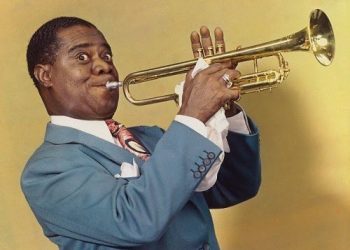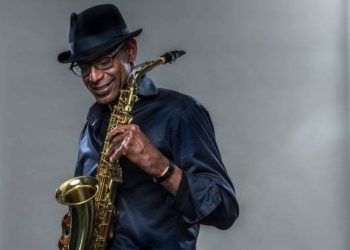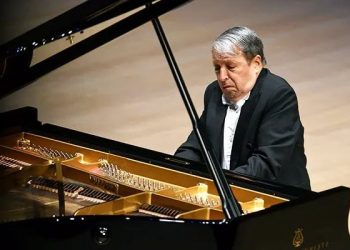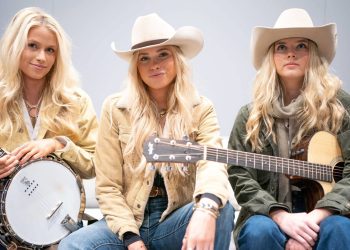South Dakota has produced a number of talented singers who have made significant contributions to the music industry. These singers come from diverse backgrounds and genres, ranging from country and folk to rock and pop. Many of them have achieved national and international success, earning recognition for their exceptional vocal abilities, songwriting skills, and stage presence.
With their unique voices and heartfelt lyrics, singers from South Dakota have captivated audiences around the world and left a lasting impact on the music landscape. Whether they hail from small towns or larger cities, these artists have drawn inspiration from their Midwestern roots and experiences, infusing their music with authenticity and soul.
Through their artistry and dedication, singers from South Dakota have proven that talent knows no boundaries and that music has the power to transcend geography and connect people from all walks of life. Their contributions to the music industry serve as a testament to the rich cultural heritage and creative spirit of the state, inspiring future generations of musicians to follow their dreams and share their voices with the world.
1. Dorothy Provine
Dorothy Provine was an American actress, singer, and dancer, best known for her work in film, television, and stage productions. Born in Deadwood, South Dakota, Provine began her entertainment career as a singer and dancer, performing in nightclubs and musical revues before transitioning to acting.
Provine gained widespread recognition for her roles in a variety of film and television productions throughout the 1950s and 1960s. She appeared in numerous movies, including “The Bonnie Parker Story” (1958), “The Great Race” (1965), and “It’s a Mad, Mad, Mad, Mad World” (1963), where she showcased her talents as both an actress and a singer.
In addition to her film work, Provine also found success on television, starring in the popular series “The Roaring 20s” (1960–1962), where she played the lead role of Pinky Pinkham. Her performance earned her a Golden Globe nomination for Best Actress in a Television Series – Musical or Comedy.
As a South Dakota native, Dorothy Provine remained connected to her roots throughout her career, often citing her Midwestern upbringing as a source of inspiration. Her contributions to the entertainment industry have left an indelible mark, earning her a place in Hollywood history and the hearts of audiences around the world.
2. EMA
EMA, also known as Erika M. Anderson, is an American singer, songwriter, and musician whose unique blend of indie rock, electronic, and experimental music has garnered critical acclaim and a dedicated following. Born in South Dakota, EMA began her musical career as a member of the indie folk band Gowns before embarking on a successful solo career.
EMA’s music is characterized by its raw, emotionally charged lyrics and atmospheric soundscapes, which she creates using a combination of electronic beats, distorted guitars, and haunting vocals. Her debut album, “Past Life Martyred Saints” (2011), received widespread praise for its confessional songwriting and innovative production, establishing EMA as a bold and uncompromising artist.
Subsequent albums like “The Future’s Void” (2014) and “Exile in the Outer Ring” (2017) further solidified EMA’s reputation as a boundary-pushing musician, with hits like “Satellites” and “Aryan Nation” earning her critical acclaim and a loyal fan base.
As a South Dakota native, EMA’s music often reflects her Midwestern roots and experiences, exploring themes of identity, alienation, and the complexities of modern life. Her bold, uncompromising approach to music has made her a respected and influential figure in the indie music scene, with her music continuing to inspire and resonate with audiences around the world.
3. We All Have Hooks for Hands
We All Have Hooks for Hands was an indie rock band formed in Sioux Falls, South Dakota, known for their energetic performances and catchy, anthemic songs. Comprising several members, including Eli Show and Ben Schmid, the band gained a devoted following in the Midwest music scene during the mid-2000s.
Their music combined elements of indie rock, folk, and punk, characterized by infectious melodies, heartfelt lyrics, and dynamic instrumentals. We All Have Hooks for Hands’ debut album, “The Shape of Energy,” released in 2006, garnered critical acclaim for its raw emotion and musical versatility. Tracks like “The Man Sitting Next to You” and “Made Up of Tiny Lights” showcased the band’s talent for crafting memorable hooks and evocative storytelling.
As South Dakota natives, We All Have Hooks for Hands drew inspiration from their surroundings and experiences, often infusing their music with themes of small-town life, love, and longing. Their authentic, relatable approach to songwriting endeared them to fans and earned them a reputation as one of the region’s most exciting indie acts.
Though the band disbanded in the late 2000s, We All Have Hooks for Hands’ legacy lives on through their music, which continues to resonate with listeners for its sincerity, passion, and timeless appeal.
4. Cris Williamson
Cris Williamson is a pioneering singer-songwriter, feminist, and LGBTQ+ activist known for her profound impact on the folk music scene. Born in Deadwood, South Dakota, Williamson’s music has been celebrated for its soul-stirring melodies, poignant lyrics, and unwavering commitment to social justice.
Williamson rose to prominence in the 1970s with the release of her groundbreaking album “The Changer and the Changed” (1975), which became one of the best-selling independent releases of its time. The album’s themes of love, empowerment, and inclusivity struck a chord with listeners, particularly within the LGBTQ+ community, earning Williamson recognition as a trailblazer for queer representation in music.
Throughout her career, Williamson’s music has served as a powerful tool for activism and advocacy, addressing issues such as feminism, environmentalism, and human rights. Hits like “Waterfall” and “Shooting Star” have become anthems of hope and resilience, inspiring generations of listeners to stand up for equality and justice.
As a South Dakota native, Cris Williamson’s music is deeply rooted in her Midwestern upbringing and experiences, often drawing inspiration from the vast landscapes and rich cultural heritage of the region. Her unwavering commitment to social change and her pioneering spirit have made her a beloved icon in the folk music community and a beacon of hope for marginalized voices everywhere.
5. Brule
Brulé is a Native American contemporary music group based in South Dakota, known for their unique blend of traditional Native American music with modern rock, pop, and classical elements. Founded by Paul LaRoche, a member of the Lower Brule Sioux Tribe, Brulé’s music celebrates Native American culture, spirituality, and heritage while incorporating contemporary influences.
The band’s signature sound combines traditional Native American instruments such as flutes, drums, and vocals with electric guitars, keyboards, and orchestral arrangements, creating a fusion of styles that is both captivating and innovative. Brulé’s music often features mesmerizing melodies, rhythmic drumming, and heartfelt lyrics that explore themes of identity, connection to the land, and the struggle for cultural preservation.
Brulé has released numerous albums over the years, including “We the People” (1996), “The Collection” (2001), and “One World One Breath” (2019), earning critical acclaim and a devoted following for their powerful performances and heartfelt storytelling. Their music has been featured in films, television shows, and live performances around the world, bringing Native American culture to audiences of all backgrounds.
As ambassadors of Native American music and culture, Brulé remains deeply connected to their South Dakota roots, often drawing inspiration from the natural beauty and spiritual traditions of the Great Plains. Their music serves as a bridge between past and present, honoring the legacy of their ancestors while embracing the diversity and creativity of contemporary music.
6. Bob Stewart
Bob Stewart, born in Rapid City, South Dakota, is a renowned jazz tuba player and composer known for his innovative approach to the instrument and his contributions to the jazz genre. Stewart has established himself as one of the leading tuba players in the world, pushing the boundaries of traditional jazz and exploring new sonic possibilities.
Stewart’s music blends elements of traditional jazz with avant-garde experimentation, incorporating techniques such as circular breathing, multiphonics, and extended vocalizations to create a unique and dynamic sound. His virtuosic playing, inventive improvisation, and rich, resonant tone have earned him widespread acclaim and recognition among jazz aficionados and fellow musicians alike.
Throughout his career, Stewart has collaborated with some of the most celebrated artists in jazz, including Dizzy Gillespie, McCoy Tyner, and Wynton Marsalis. He has released several solo albums, including “First Line” (1988) and “Goin’ Home” (1992), showcasing his talent as both a performer and composer.
As a South Dakota native, Bob Stewart remains connected to his Midwestern roots, often drawing inspiration from the landscapes and cultural heritage of the region in his music. His contributions to the jazz genre have solidified his legacy as one of the most innovative and influential tuba players of his generation, with his music continuing to inspire and captivate audiences around the world.
7. Myron Floren
Myron Floren, born in Roslyn, South Dakota, was a beloved accordionist and musician best known for his long-standing role as a member of “The Lawrence Welk Show” orchestra. Floren’s talent, charisma, and versatility made him a fan favorite on the popular television program, where he showcased his virtuosic accordion playing and entertained audiences with his infectious personality.
Floren’s musical career began at a young age, and he quickly gained recognition for his exceptional accordion skills. He joined “The Lawrence Welk Show” in 1950 and became a regular performer, captivating viewers with his lively performances and jovial demeanor. Floren’s contributions to the show helped popularize the accordion and introduced millions of viewers to the instrument’s rich and diverse repertoire.
In addition to his work on television, Floren enjoyed a successful career as a recording artist and live performer. He released numerous albums showcasing his accordion talents, including “Accordion Man” and “Polka Party with Myron Floren,” which garnered critical acclaim and commercial success.
As a South Dakota native, Myron Floren remained deeply connected to his roots throughout his career, often returning to his hometown to perform and support local causes. His contributions to music and entertainment have left an indelible mark, earning him a place in the hearts of fans around the world and securing his legacy as one of the greatest accordionists of all time.
8. Boyd Raeburn
Boyd Raeburn, born in Faith, South Dakota, was a pioneering figure in the world of big band jazz as a bandleader, composer, and arranger. Raeburn’s innovative approach to orchestration and his willingness to experiment with new musical ideas made him a driving force in the evolution of jazz during the 1940s.
Raeburn’s career in music began as a saxophonist and clarinetist, performing with various bands before forming his own ensemble in the early 1940s. His orchestra quickly gained attention for its unconventional arrangements, complex harmonies, and adventurous spirit, attracting some of the most talented musicians of the time.
One of Raeburn’s most notable contributions to jazz was his use of avant-garde elements and experimental techniques in his compositions and arrangements. Tracks like “Boyd Meets Stravinsky” and “Dalvatore Sally” showcased his bold vision and willingness to push the boundaries of traditional big band music.
Despite achieving critical acclaim and attracting a dedicated following, Raeburn’s band struggled financially and disbanded in the late 1940s. However, his influence on jazz continued to resonate with musicians and fans alike, and his contributions to the genre were later recognized and celebrated by music historians and enthusiasts.
As a South Dakota native, Boyd Raeburn’s legacy serves as a testament to the state’s rich cultural heritage and its contribution to the world of jazz music. His adventurous spirit, innovative arrangements, and commitment to musical excellence continue to inspire generations of musicians to this day.
9. Jess Thomas
Jess Thomas, born in Hot Springs, South Dakota, was a renowned operatic tenor celebrated for his powerful voice, dramatic intensity, and exceptional vocal range. Thomas gained international acclaim for his performances in some of the most demanding roles in the operatic repertoire, including Wagnerian heroes like Siegmund in “Die Walküre” and Parsifal in “Parsifal.”
Thomas’ career in opera began in the late 1940s, and he quickly established himself as one of the leading heldentenors of his generation. His commanding stage presence, lyrical phrasing, and ability to convey deep emotion through his singing endeared him to audiences and critics alike.
Throughout his career, Thomas performed with many of the world’s most prestigious opera companies, including the Metropolitan Opera, the Royal Opera House, and the Bayreuth Festival. His interpretations of Wagner’s music were particularly acclaimed, with critics praising his nuanced portrayals of complex characters and his mastery of the German repertoire.
As a South Dakota native, Jess Thomas remained connected to his roots throughout his career, often returning to his hometown to perform and support local arts organizations. His contributions to the world of opera have left an indelible mark, earning him a place among the greatest tenors of the 20th century and securing his legacy as one of the finest interpreters of Wagnerian opera.
10. Buddy Red Bow
Buddy Red Bow, a Lakota Sioux musician and songwriter born in Pine Ridge Indian Reservation, South Dakota, made significant contributions to Native American music, particularly in the country and folk genres. His music often served as a poignant reflection of the struggles, resilience, and cultural heritage of Native American communities.
Red Bow’s music was deeply rooted in his Lakota Sioux heritage, often featuring traditional drumming, singing, and storytelling alongside contemporary instrumentation. His songs touched on themes such as identity, spirituality, and social justice, offering listeners a window into the experiences of Indigenous peoples in America.
Throughout his career, Red Bow released several albums, including “The Lakota Sioux Indian Reservation,” which earned critical acclaim for its authenticity and emotional depth. Tracks like “Lakota Lullaby” and “American Indian Movement Song” became anthems for Indigenous rights and cultural preservation.
As a South Dakota native, Buddy Red Bow remained connected to his Lakota Sioux roots, using his music as a platform to raise awareness about issues facing Native American communities and to celebrate their rich cultural heritage. His contributions to Native American music and activism continue to inspire artists and activists alike, leaving a lasting legacy that honors the resilience and spirit of Indigenous peoples.









